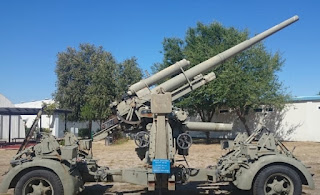You're catching a tram with an anti-aircraft gun? How did you come up with this idea... 8.8cm FLAK German tank Tiger's performance
.jpg)
The 8.8cm FLAK Tiger tank is one of the most impressive tanks to have been developed in Germany during World War II. It was a combination of the fearsome 8.8cm FLAK gun and the formidable Tiger I tank. This article will outline the specifications and performance of this unique tank, which was developed to provide the German army with a powerful and mobile anti-aircraft defense system. Development of the 8.8cm FLAK Tiger Tank The 8.8cm FLAK Tiger tank was developed in response to the need for an effective anti-aircraft defense system that could keep up with advancing German armies. In 1941, the German army ordered the development of a new tank that would be equipped with the powerful 8.8cm FLAK gun. The chassis of the Tiger I tank was chosen for this project, as it was one of the most advanced tanks of its time. The combination of the 8.8cm FLAK gun and the Tiger I tank proved to be an effective solution, resulting in the development of the 8.8cm FLAK Tiger tank. Specifications of...
